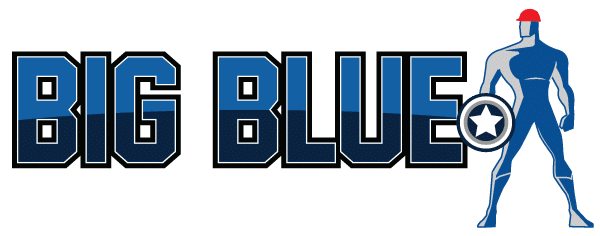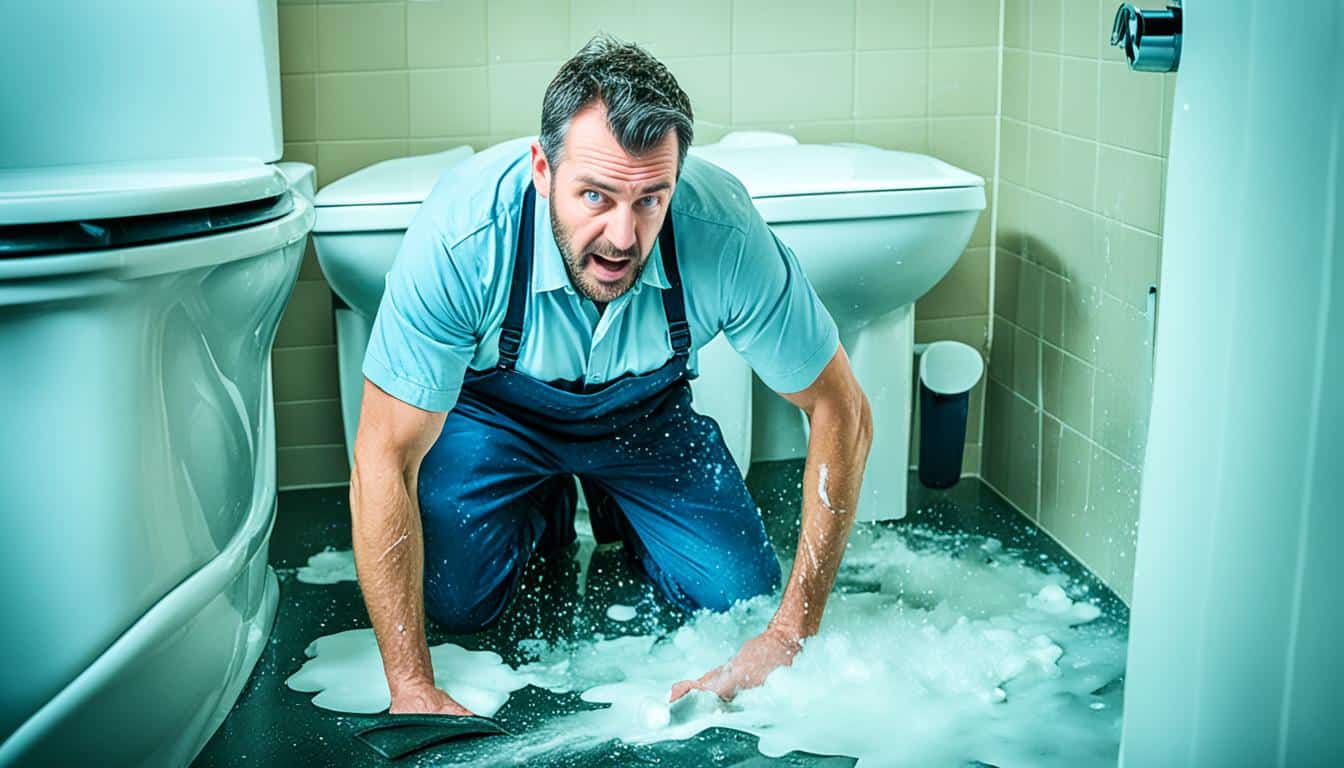An overflowing toilet can be a source of panic and frustration for any homeowner. However, many people are unsure if it qualifies as a plumbing emergency that requires immediate attention. Are you aware of the urgency of an overflowing toilet? Do you know what steps to take to manage the situation effectively? This article will provide you with the answers you need to navigate this common household issue.
Key Takeaways:
- Recognize the signs of an overflowing toilet to take immediate action.
- Understand the common causes of toilet overflows to prevent future occurrences.
- Take immediate steps to manage an overflowing toilet and mitigate damage.
- Implement long-term solutions to prevent future toilet overflows.
- Be aware of the potential health risks associated with toilet overflows.
Recognizing the Urgency of an Overflowing Toilet
Recognizing the urgency of an overflowing toilet is crucial in order to take immediate action. When a toilet overflows, it can lead to water damage and potential health hazards if not addressed promptly. By being able to identify the signs of a toilet overflow, you can respond quickly and effectively, minimizing the damage and inconvenience caused.
Some common signs of an overflowing toilet include:
- Water overflowing from the bowl: An obvious sign of a toilet overflow is when water starts to overflow from the bowl and onto the bathroom floor. This can happen due to clogs, excessive flushing, or issues with the toilet’s plumbing system.
- Slow drainage: If you notice that water is draining slowly from the toilet bowl, it could be an early indicator of an impending overflow. This can be caused by a partial clog in the drain pipe.
- Gurgling sounds: Unusual gurgling sounds coming from the toilet bowl or drain can indicate that water is having difficulty flowing through the plumbing system. These sounds may occur when there is a blockage or air trapped in the pipes.
- Foul odors: A persistent foul smell emanating from the toilet area can be a sign of a toilet overflow. The backup of sewage or stagnant water can cause unpleasant odors to permeate the bathroom.
- Water damage around the toilet: If you notice water stains, discoloration, or damage to the flooring or walls surrounding the toilet, it could indicate a past or ongoing toilet overflow issue. Water damage can lead to structural problems and mold growth if left untreated.
By recognizing these signs and taking immediate action, you can prevent further damage and address the toilet overflow effectively. Remember, if you are unsure about how to handle a toilet overflow or if the situation appears to be severe, it is always advisable to seek professional assistance.
Understanding the Causes of Toilet Overflows
To effectively prevent toilet overflows, it is crucial to understand their causes. Common causes include:
- Clogged drains: Build-up of debris, such as toilet paper, wipes, or foreign objects, can block the drain and prevent proper water flow.
- Blocked sewer lines: Tree roots, grease build-up, or foreign objects can obstruct the sewer lines, causing water to back up into the toilet.
- Faulty flush valves: A malfunctioning flush valve can lead to incomplete flushing, resulting in water accumulation and eventual overflow.
- Excess water pressure: High water pressure can cause water to forcefully enter the toilet bowl, exceeding its capacity and causing overflow.
- Improper flushing habits: Flushing excessive amounts of toilet paper, feminine hygiene products, or non-flushable items can overwhelm the plumbing system and lead to overflow.
By addressing these common causes, you can significantly reduce the risk of toilet overflows and prevent potential damage to your plumbing system and property.
Immediate Steps to Take When Your Toilet Overflows
When faced with an overflowing toilet, it’s crucial to take immediate action to minimize damage and prevent further issues. Here are some steps to manage an overflowing toilet:
- Shut off the water supply: Locate the water shut-off valve behind or near the toilet and turn it clockwise to stop the flow of water.
- Clear any blockages: If the toilet is still overflowing after shutting off the water supply, use a plunger or an auger to remove any blockages. Place the plunger over the drain and vigorously push and pull to create pressure and dislodge the obstruction.
- Clean up spills: If there is any water or sewage spills, wear gloves and use towels or a wet/dry vacuum to clean up the mess immediately. Dispose of the contaminated materials properly.
These initial steps will help you contain the situation and prevent further damage to your home. Remember, if the problem persists or if you’re unsure about handling the situation on your own, it’s best to seek professional help from a licensed plumber.
Long-Term Solutions for Preventing Future Toilet Overflows
While managing an overflowing toilet is crucial, it is equally important to implement long-term solutions to prevent future occurrences. By taking proactive steps, you can reduce the risk of toilet overflows and ensure a smoothly functioning plumbing system in your home.
Here are some effective long-term preventive measures to consider:
- Regular maintenance: Schedule regular professional inspections and maintenance for your plumbing system. This can help identify any potential issues early on and prevent them from escalating into toilet overflows.
- Proper flushing habits: Educate everyone in your household about what can and cannot be flushed down the toilet. Avoid flushing non-flushable items like wet wipes, sanitary products, or paper towels, as they can clog the drains and lead to overflows.
- Installing a pressure reducing valve: Excess water pressure can put a strain on your plumbing system and increase the risk of toilet overflows. Consider installing a pressure reducing valve to maintain optimal water pressure and prevent any sudden surges that could lead to overflow situations.
- Using drain screens: Placing drain screens in your toilet and bathroom drains can help catch hair, debris, and other potential clog-causing materials. This simple measure can minimize the chances of clogs and subsequent overflows.
- Avoiding flushing non-flushable items: Remind everyone in your household to only flush items that are meant to be flushed, such as toilet paper. Disposable wipes, diapers, and other non-flushable items should be disposed of in the trash to prevent clogs and overflow incidents.
By following these long-term preventive measures, you can significantly minimize the risk of future toilet overflows in your home. Remember, prevention is always better than dealing with the aftermath of an overflow.
Health Risks Associated with Toilet Overflows
Toilet overflows can pose significant health risks due to the exposure to sewage and bacteria. When a toilet overflows, it can result in the spread of waterborne diseases, inhalation of harmful fumes, and exposure to mold and mildew. These health hazards can have detrimental effects on the well-being of your household, making it crucial to address toilet overflows promptly.
Exposure to sewage and bacteria can lead to various waterborne diseases, such as gastroenteritis, cholera, and hepatitis A. The contaminated water from the toilet overflow can contain harmful pathogens that, if ingested or come into contact with open wounds, can cause illness. It is important to remember that even minute amounts of sewage can contain a high concentration of dangerous bacteria.
In addition to waterborne diseases, toilet overflows can release hazardous fumes that can be inhaled. The combination of sewage, toilet cleaning chemicals, and stagnant water can produce toxic gases, such as methane and hydrogen sulfide. Inhaling these fumes can cause respiratory problems, headaches, dizziness, and other health issues.
Moreover, toilet overflows can lead to the growth of mold and mildew. The moisture created by the overflow provides an ideal environment for these fungi to thrive. Mold spores can trigger allergies, respiratory problems, and other health conditions, especially in individuals with pre-existing respiratory issues or weakened immune systems.
Addressing toilet overflows promptly is essential not only for preventing further damage to your home but also for safeguarding your health and the well-being of your household. By taking immediate action and following the necessary steps to manage and prevent toilet overflows, you can reduce the risk of exposure to sewage, bacteria, and other harmful substances.
Is an overflowing toilet an emergency?
Whether an overflowing toilet is considered an emergency depends on the severity of the situation. While some toilet overflows can be managed as a DIY project, others may require professional intervention. Factors such as water damage, sewage backup, and the presence of other plumbing issues can determine the urgency of the situation.
When faced with a severe toilet overflow, it is crucial to assess the severity and potential risks. If the toilet overflow is causing significant water damage or if sewage is backing up into your home, it is recommended to treat it as an emergency and seek professional help immediately.
An overflowing toilet can lead to extensive water damage, which can be costly to repair if not addressed promptly. It can also pose health risks due to the presence of wastewater and bacteria. It’s essential to consider the severity of the toilet overflow and act accordingly to prevent further damage and protect your health.
In less severe situations, where the toilet overflow is minimal and there are no signs of water damage or sewage backup, you may be able to handle the issue yourself. However, it is crucial to exercise caution and ensure that you have the necessary knowledge and tools to safely manage the overflow.
If you are unsure about the severity of the toilet overflow or if you are unable to resolve the issue on your own, it is always recommended to consult a professional plumber. They have the expertise and equipment to assess the situation accurately and provide the necessary repairs or solutions.
Remember, the severity of the toilet overflow will dictate whether it is an emergency or not. Always prioritize your safety and the well-being of your home when dealing with an overflowing toilet.
Conclusion
In conclusion, managing a toilet overflow can be a stressful experience. However, it is crucial to remain calm and take appropriate action to mitigate the damage and prevent future incidents. By recognizing the urgency of an overflowing toilet and understanding its causes, you can effectively address the issue.
Implementing preventive measures such as regular maintenance, proper flushing habits, and installing pressure reducing valves can significantly reduce the risk of toilet overflows. Additionally, seeking professional help when in doubt is always a wise decision to ensure the safety and well-being of your home.
Remember, a toilet overflow should be treated as a priority, as it can lead to water damage, sewage backup, and health hazards. By following the steps outlined in this article and taking preventive measures, you can successfully manage toilet overflows and maintain a functional and safe plumbing system in your home.


